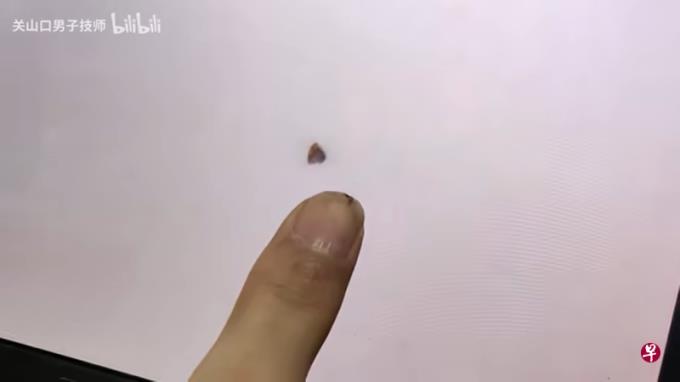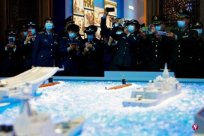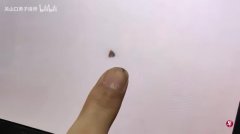
The Korean scientific team announced the successful synthesis of the world's first room temperature frequent times.After the superconducting crystal, a research team of a university in China also announced the initial reproduction of this superconducting material.
China Online Video Platform Bilibili Animation (Station) Uploaded a video on Tuesday (August 1), the UP owner "Guanshankou Men's Technician", claiming that they have successfully synthesized LK-The 99 crystal, the angle of the crystal suspension is larger than the magnetic suspension angle synthesized by the Korean Quantum Energy Research Center, which is expected to realize the real meaningless superconducting magnetic suspension.
However, you need to verify whether the above crystal can achieve zero resistance under room temperature normal pressure conditions to prove whether the Korean team's thesis is true.
Video profile shows that the UP master comes from Huazhong University of Science and Technology. The team is led by Chang Haixin, a professor at the School of Materials at Huazhong University of Science and Technology. The members are post -doctoral Wu Hao and doctoral student Yang Li.Chang Haixin also confirmed to the Fiscal Association on Wednesday (2nd) that the video came from its team.
After the video was sent out, it quickly aroused warm discussions on the entire network of China and appeared on Weibo.For only a few hours of the video, the playback volume is nearly 500,000.As of Thursday (3rd) in the morning, the video has accumulated nearly 8.9 million playbacks.
The team of the South Korean Quantum Energy Research Center published two papers on the pre-printed website of the paper on July 22, announcing the successful synthesis of the first room temperature constant pressure superconductor "LK-99" in the world, that is, in frequent timesUnder pressure, the LK-99 can perform superconducting characteristics below 127 degrees Celsius.
Because this breakthrough is likely to completely change the global power, transportation, and chip industries, the above announcement will immediately sensify the global scientific community and drive a large number of room temperature superconducting concept stocks in the United States and China.However, the international physics community still has huge differences in the authenticity of this paper.
The School of Materials Science and Engineering of Beijing University of Aeronautics and Astronautics and the Indian CSIR-National Physical Laboratory published a paper on July 31, showing that the LK-99 reappeared did not show the superconducting characteristics.The experimental results are different.However, the paper uploaded by the Lawrence Berkeley National Laboratory in ARXIV concludes that LK-99 supports LK-99 as a superconductor for room temperature and ambient pressure.
A report published by Science on July 27 pointed out that LK-99's papers "lack details and generally have skepticism in the physics community."The team of the South Korean Quantum Energy Research Center is even more frank that the relevant papers have not yet been completed and there are many defects. It was published by a team member without the permission of other authors.
In addition, even if the LK-99 successfully achieves room temperature and normal pressure superconducting state, whether it can eventually be commercialized in mass production, the scientific community still has a general reservation.Cheng Nick analyzed Bloomberg, Jefferies Financial Group analyzing that LK-99's ductility seems to be not suitable for becoming cable materials, and commercialization may be difficult.
Under huge differences, many Chinese listed companies such as Tengya Seiko, Quanxin, Guoke Hengtai, Fuxitter and other Chinese listed companies have also shown relative restraint, saying that there is currently no room temperature superconducting materials.Layout.
Room temperature superconducting is one of the long -term dreams of the physics community.Superconducting is a special state of material. At a certain temperature, the conductor is a state of zero, which enables the superconductors to transport without loss.However, the general conductor needs to be cooled to the extremely low temperature of about minus 196 degrees Celsius, and it can apply extremely high pressure to enter the superconductive state, so it is difficult to use it into reality.
If this technology is realized, all electrical appliances and electronic devices used in human beings will be completely solved by the loss caused by the resistance of the resistance; the computer does not needSmaller and lower power consumption.



